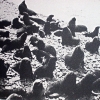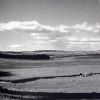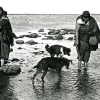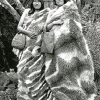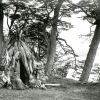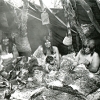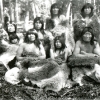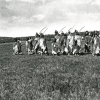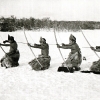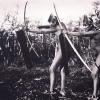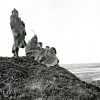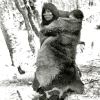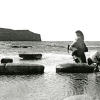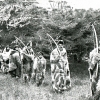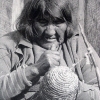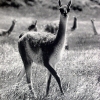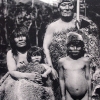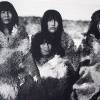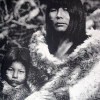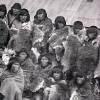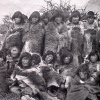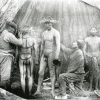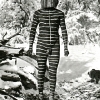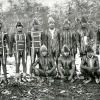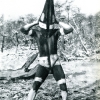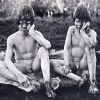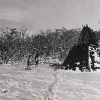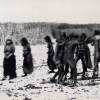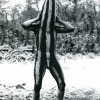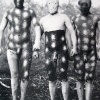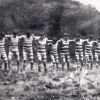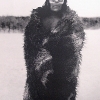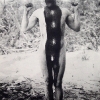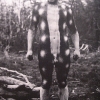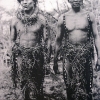Patrón de Asentamiento
In their search for resources, the Selk’nam moved around in family groups, occasionally meeting with other groups (for trade, important ceremonies, whale beachings, etc.). They lived in temporary camps for short periods, from a few days to a few weeks, and built two kinds of dwellings there. The less common were Kauwi, conical structures found in forested areas, where wood was available. These had an average diameter of 3.5–4.5 meters, with the exact size depending on the group they would house, usually one to three families. These buildings were usually constructed for the Hain ritual. The more commonly found type of Selk’nam dwelling was the windbreak or tent. These were more or less cone-shaped structures made of trunks and branches covered with guanaco or sea lion hides. They were temporary structures that could be assembled and dismantled quickly and easily, which was the work of the women of the group. The covering consisted of 6 to 16 hides stitched together, while the tents themselves were erected in a depression or hole dug out of the ground to a depth of around 25 to 40 cm, around 1-3 meters in diameter. The hearth was always located at the center of the dwelling. The floor of the residence was covered with grass and small branches for insulation, and sleeping skins were laid over this layer. Both types of structures served as single or multi-family dwellings. In summer, when the weather was good, the windbreak was set up in an open semicircle, while in winter it was enclosed and reinforced. When several families camped in the same spot, they erected their tents 25 to 40 meters apart, where possible.



